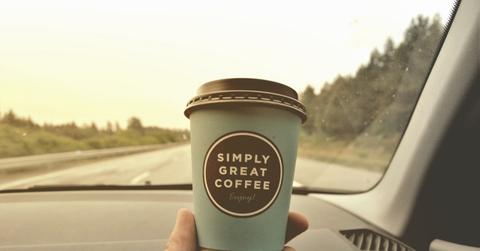This Company Cracked The Code On Making Recyclable Coffee Cups
Most standard recycling facilities can't process disposable coffee cups, which means billions fill the trash every year. This company thinks they've got a new design that will change how people recycle.
Updated May 23 2019, 10:25 a.m. ET
Coffee cups have been getting a lot of attention in the United Kingdom as legislators have threatened consumers with a "latte levy" in an attempt to combat waste. An estimated 2.5 billion coffee cups end up in the trash every year in the U.K. alone. If consumers were taxed on every cup they bought, they might be more willing to bring a container from home.
Why not just promote recycling? Unfortunately, coffee cups are mixed paper and plastic. The interior coating that keeps the cup waterproof is too difficult to separate for recycling facilities. This is a flaw in the design and public knowledge. Most people don't realize there's no way to make recycling happen when they put the cup in the bin in good faith.
With all the attention the proposed tax is getting, one company decided it was time to unroll their new product. It's a cup they claim is actually recyclable. That's right: Frugalpac is promoting itself as a disposable cup that solves the plastic/paper challenge.
According to their website, Frugalpac cups are made from recycled cardboard and a plastic lining that is easy to remove at a standard recycling facility.
Martin Myerscough, founder and CEO of Frugalpac, told The Huffington Post UK that the company is in talks with Starbucks to provide them with cups as a way to promote sustainability and recycling. The Frugal Cups are already being used on trial in U.K. coffee locations Paddy & Scott’s and The Colombian Coffee Company, and plan to move into large scale production in February.
“It’s taken a while but I think the public is finally ready to engage with the war on waste,” said Myerscough.“If we can stop the nonsense that drives the vast majority of this country’s 2.5 billion paper cups to landfill, we will begin to make a difference.”
It seems like Myerscough is skeptical about the idea that people will start to bring reusable cups from home just because they're being charge five pence on the disposable cup. He says the main way to combat waste is by making it very easy for the consumer to do so.
“A takeaway cup is designed to be taken away, the clue’s in the name. As a consumer, you’re not going to finish your drink and then walk half a mile just to throw the cup in a special bin. It won’t happen. The key is making it easy for people to do the right thing, and that’s what we’ve done with the Frugal Cup.”
The Frugal Cup is one promising solution, but it doesn't address the fact that paper recycling facilities don't like to accept materials that have been tainted by food or drinks. It might also not be in their production chain to remove plastic linings, even if the Frugalpac design proves easier to work with than standard coffee cups. But combating waste means coming at it from a bunch of different angles, preferably after drinking a hot cup of coffee.
